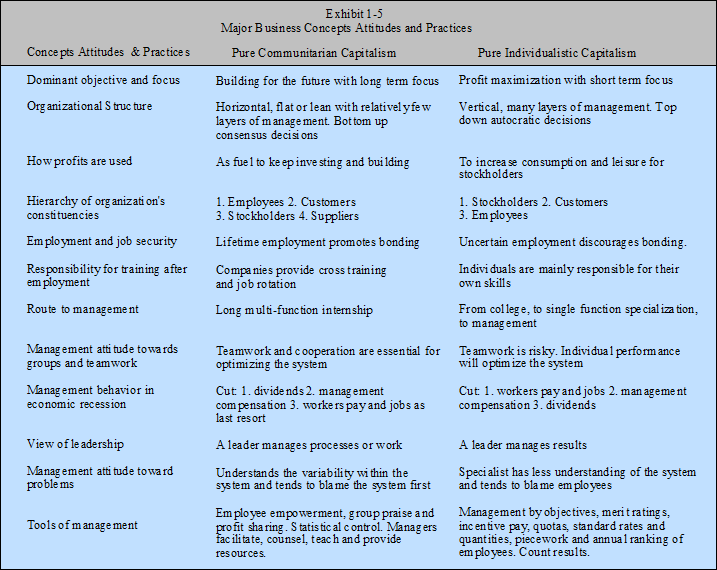Reconciling Account Overview, Process, How It Works

Unexplained or mysterious discrepancies, however, may warn of fraud or cooking the books. Businesses and individuals may reconcile their records daily, monthly, quarterly, or annually. Depending on the number of discrepancies, https://www.kelleysbookkeeping.com/guides-to-financial-statements/ you may need to create a supporting schedule that details the differences between your internal books and bank accounts. Check that all incoming funds have been reflected in both your internal records and your bank account.
- A three-way reconciliation is a specific accounting process used by law firms to check that the firm’s internal trust ledgers line up with individual client trust ledgers and trust bank statements.
- The process of reconciliation confirms that the amount leaving the account is spent properly and that the two are balanced at the end of the accounting period.
- If the indirect method is used, then the cash flow from the operations section is already presented as a reconciliation of the three financial statements.
- Most accounting systems and ERPs have built-in modules that can import bank transactions and compare them to the transactions in the system.
How to perform a three-way trust reconciliation

At the end of each month, you diligently reconcile your balance sheet accounts. You compare the outstanding customer invoices in your records to the actual payments received, identifying any discrepancies. Bank reconciliations involve definition of “capital budgeting practices” comparing the business’s financial statements with the statements it receives from the bank. This helps to ensure that the business’s records accurately reflect the transactions that have taken place in its bank account.
The timing of transactions
When a parent company has several subsidiaries, the process helps identify assets. These may be the result of billing mistakes related to loans, deposits, and payment processing activities. This is true for both those within a company and those looking in from the outside. Parent companies use this to bring together all the accounts and ledgers from the subsidiaries they may have. The process looks for mismatches both within and between any of the subsidiaries.
Bank Reconciliation
Another factor that seems to be unavoidable, no matter how diligent your accounting team is, is the total boycott of a transaction. Comparing accounts helps you spot transactions you have missed and keeps all your records as consistent with each other and accurate as possible. Make any required adjustments between the categories based on a calculation of short-term notes payable liabilities for the next 12 months to classify amounts in the categories as short-term or long-term correctly. There are many types of reconciliation in accounting, with the best method for a situation generally depending on the type of account that you’re looking to reconcile. A business that processes a few transactions a month may be able to reconcile its accounts monthly, while a larger business with hundreds of transactions daily may need to reconcile its accounts more frequently.
Stripe’s reconciliation process involves comparing your business’s internal records, such as invoices, with external records such as settlement files, payout files and bank statements. Stripe’s automated system handles this comparison, enabling you to capture revenue accurately and reconcile your internal accounting systems with Stripe-processed charges and refunds at a transaction level. According to a survey conducted by the Association of Certified Fraud Examiners (ACFE), financial statement fraud constituted 9% of all reported fraud cases in 2022.
What are the Risks of Not Reconciling Bank Statements?

This schedule of activity should support the general ledger ending balance for each account. And, because Clio integrates with best-in-class accounting tools like QuickBooks and Xero, you can use them together to further simplify reconciliations. When using Clio together with these integrated accounting solutions, trust account updates made in Clio are then automatically updated in QuickBooks or Xero. https://www.online-accounting.net/ It’s also important to ensure you maintain detailed records of the three-way reconciliation accounting process. For law firms, for example, one key type of business reconciliation is three-way reconciliation for trust accounts. In the following post, we’ll cover the crucial types of reconciliation for legal professionals and delve into the fundamentals of three-way reconciliation accounting.
Adding to the challenge, sometimes an entry in the general ledger may correspond to two or more entries in a bank statement, or vice versa. Later that day, you get an urgent text from your bank that your account is overdrawn by $5,000. If you had performed regular bank reconciliations, you would have known about that check and to keep your eyes peeled for it.
It involves estimating the actual amount that should be in the account based on the previous account activity levels or other metrics. The process is used to find out if the discrepancy is due to a balance sheet error or theft. Reconciliation is used by accountants to explain the difference between two financial records, such as the bank statement and cash book. Any unexplained differences between the two records may be signs of financial misappropriation or theft. Accounting software is one of a number of tools that organizations use to carry out this process thus eliminating errors and therefore making accurate decisions based on the financial information.
Here are five best practices that can help your organization to improve the account reconciliation process. We refer to them as bank, vendor, customer, business-specific, and intercompany reconciliation. Businesses are generally advised to reconcile their accounts at least monthly, but they can do so as often as they wish. Businesses that follow a risk-based approach to reconciliation will reconcile certain accounts more frequently than others, based on their greater likelihood of error. Other features include inventory tracking, reporting, invoicing, project management tools and the ability to categorize transactions using classes.
Reconciliation then lets those managing the process ensure that the figures are correct and in agreement. It helps eliminate fraud and any accounting errors, helping a business be more efficient. Many of the household accounting software names, such as QuickBooks, Xero and Zoho Books, can be classified as integrated accounting software solutions. While much of the account reconciliation process is handled by accounting software, it still needs to be done. If you’re a software holdout and still record transactions manually, it’s even more important your accounts be reconciled regularly. Next, you check that all incoming funds have been reflected in both your internal records and your bank account statement.
When you reconcile accounts, you compare two or more sources of a company’s accounting to check for errors and bring them into agreement. Failure to produce a reconciliation report when there are differences means that the correct values are not included in the corresponding account. Depending on the significance of these differences, this could cause problems related to cash flow and could result in fines or penalties for unpaid bills. High growth businesses which burn large amounts of cash or those with little cash left in the bank should perform bank reconciliations weekly. Alternatively, businesses with a field sales team will have to reconcile the value of employee expenses payable with the individual balances of submitted expense reports.
Any differences found will be easier to understand if they took place over a short time frame. Reconciliation is an accounting process which SMB owners and their accountants need to perform to ensure that the correct balances are recorded within their accounts. So, for example, if you spend money with a company credit card but forget to declare it in the general ledger, this could lead to inaccuracies between credit/debit card reconciliation and bank reconciliation.
The best accounting software makes it easy to keep a detailed financial record so that you’re ready come tax season. It also includes tools for streamlining accounting tasks, like the invoice process, and gaining insight into your business’s financial health. Your first step to prepare for a thorough account reconciliation is to compare your internal account register to your bank statement.
Account reconciliation can also indicate fraudulent activity, whether it’s through unauthorised financial activity such as using the company credit card without permission or edited invoices. By performing account reconciliation, you’re essentially reviewing financial information from several sources to ensure its accuracy. Account reconciliation software is a computerized program that automates the account reconciliation process, making it more streamlined, quicker, and easier to execute than using paper-based manual spreadsheets. Go through all transactions entered into internal records and compare them against similar transactions appearing in the bank statement. Check off transactions that are in agreement, and make a list of transactions in the bank statement that are not supported by any evidence, such as a payment receipt. Time lag causes inconsistencies in different accounting records and account reconciliation helps to take care of them.
